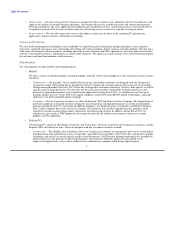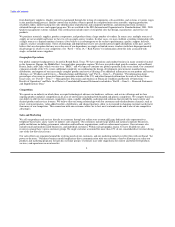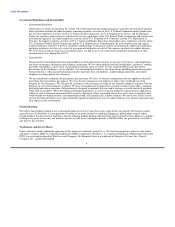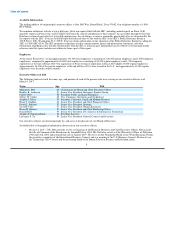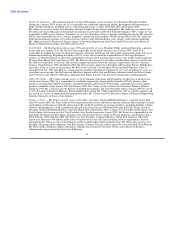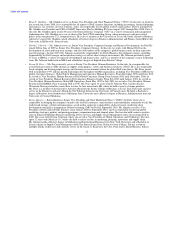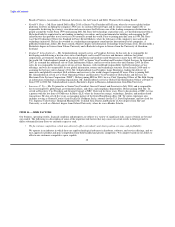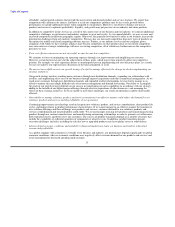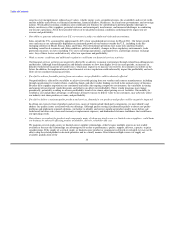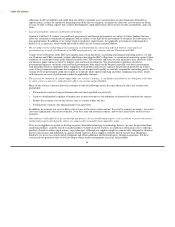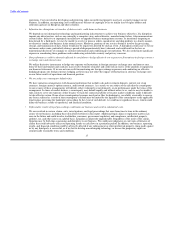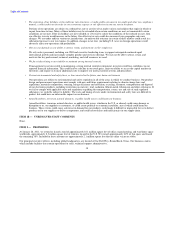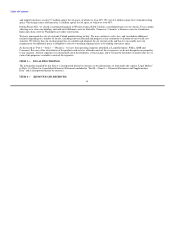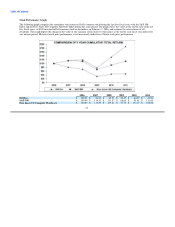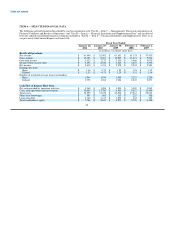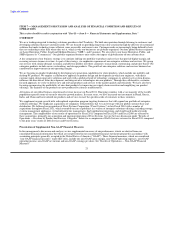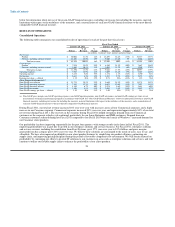Dell 2010 Annual Report Download - page 18
Download and view the complete annual report
Please find page 18 of the 2010 Dell annual report below. You can navigate through the pages in the report by either clicking on the pages listed below, or by using the keyword search tool below to find specific information within the annual report.
Table of Contents
concerns over unemployment, reduced asset values, volatile energy costs, geopolitical issues, the availability and cost of credit,
and the stability and solvency of financial institutions, financial markets, businesses, local and state governments, and sovereign
nations. Weak global economic conditions also could harm our business by contributing to potential product shortages or
delays, insolvency of key suppliers, potential customer and counterparty insolvencies, and increased challenges in conducting
our treasury operations. All of these possible effects of weak global economic conditions could negatively impact our net
revenue and profitability.
• Our ability to generate substantial non-U.S. net revenue is subject to additional risks and uncertainties.
Sales outside the U.S. accounted for approximately 48% of our consolidated net revenue for Fiscal 2011. Our future growth
rates and success are substantially dependent on continued growth of our business outside the U.S., including in the key
emerging countries of Brazil, Russia, India, and China. Our international operations face many risks and uncertainties,
including varied local economic and labor conditions, political instability, changes in those regulatory environments, trade
protection measures, tax laws (including U.S. taxes on foreign operations), copyright levies, and foreign currency exchange
rates. Any of these factors could adversely affect our operations and profitability.
• Weak economic conditions and additional regulation could harm our financial services activities.
Our financial services activities are negatively affected by an adverse economic environment through related loan delinquencies
and defaults. Although loan delinquencies and defaults continue to slow from higher levels in recent periods, an increase in
defaults would result in greater net credit losses, which may require us to increase our reserves for customer receivables in the
future. In addition, the implementation of new financial services regulation could unfavorably impact the profitability and cash
flows of our consumer financing activities.
• If we fail to achieve favorable pricing from our vendors, our profitability could be adversely affected.
Our profitability is affected by our ability to achieve favorable pricing from our vendors and contract manufacturers, including
through negotiations for vendor rebates, marketing funds, and other vendor funding received in the normal course of business.
Because these supplier negotiations are continuous and reflect the ongoing competitive environment, the variability in timing
and amount of incremental vendor discounts and rebates can affect our profitability. These vendor programs may change
periodically, potentially resulting in adverse profitability trends if we cannot adjust pricing or cost variables. Our inability to
establish a cost and product advantage, or determine alternative means to deliver value to our customers, may adversely affect
our industry unit share position, revenue, and profitability.
• If we fail to deliver consistent quality products and services, demand for our products and profits could be negatively impacted.
In selling our extensive line of products and services, many of which include third-party components, we must identify and
address any quality issues associated with our offerings. Although quality testing is performed regularly to detect any quality
problems and implement required solutions, our failure to identify and correct significant product quality issues before sale
could result in lower sales, increased warranty or replacement expenses, and diminished customer confidence that could harm
our operating results.
• Our reliance on vendors for products and components, many of whom are single-source or limited source suppliers, could harm
our business by adversely affecting product availability, delivery, reliability and cost.
We maintain several single-source or limited-source supplier relationships, either because multiple sources are not readily
available or because the relationships are advantageous to us due to performance, quality, support, delivery, capacity, or price
considerations. If the supply of a critical single- or limited-source product or component is delayed or curtailed, we may not be
able to ship the related product in desired quantities and in a timely manner. Even where multiple sources of supply are
available, qualification of the
14


